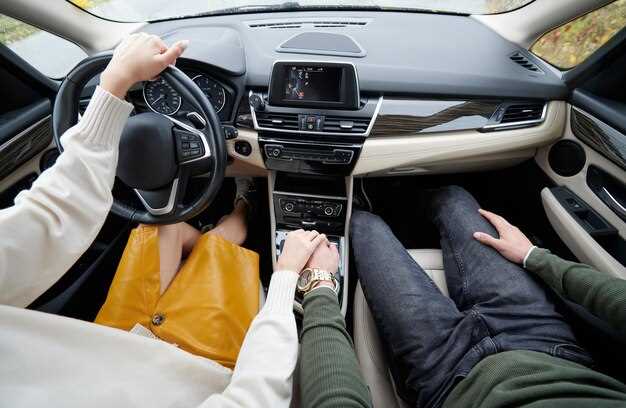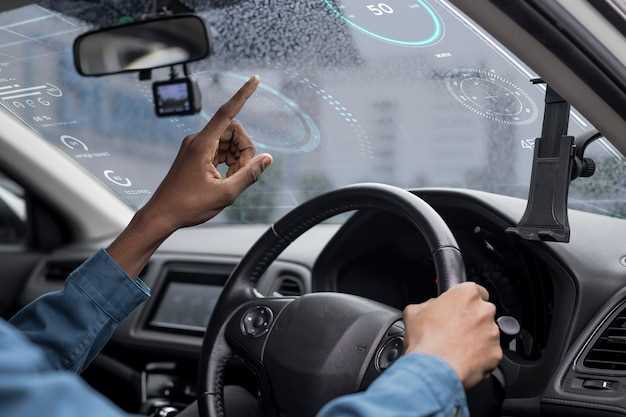
In today’s fast-paced world, the importance of safety in vehicles cannot be overstated. Modern cars are equipped with an impressive array of protection features that aim to prevent accidents and minimize injuries. As technology advances, manufacturers are continually innovating to enhance the safety of their vehicles, making it crucial for consumers to understand what features to prioritize when choosing a new car.
Understanding the key safety features available in today’s automobiles is essential for both peace of mind and practical driving. From advanced driver assistance systems to structural reinforcements, the options can be overwhelming. However, knowing what to look for can make a significant difference when it comes to ensuring your personal safety and that of your passengers.
In this article, we will explore the top safety features that modern cars offer, highlighting their roles in providing effective protection. By educating yourself on these innovations, you can make an informed decision when it comes to purchasing your next vehicle, ensuring that you and your loved ones are safeguarded against potential hazards on the road.
Advanced Driver Assistance Systems (ADAS) Overview

Advanced Driver Assistance Systems (ADAS) represent a significant leap in automotive technology, enhancing car safety and offering greater protection for drivers, passengers, and pedestrians. These systems utilize a combination of sensors, cameras, and radar to monitor the vehicle’s surroundings and assist the driver in various situations.
One of the core functions of ADAS is collision avoidance. By detecting potential obstacles, these systems can alert the driver or even initiate automatic braking to prevent accidents. Features like Forward Collision Warning (FCW) and Automatic Emergency Braking (AEB) are vital components that protect occupants by reducing the severity or likelihood of a crash.
Lane Keeping Assist (LKA) is another important feature that contributes to driver safety. This system monitors lane markings and helps prevent unintentional lane departures by adjusting steering input. Such technology not only aids in maintaining proper vehicle positioning but also decreases the risk of accidents associated with distracted driving.
Adaptive Cruise Control (ACC) enhances the driving experience by automatically adjusting the car’s speed to maintain a safe distance from the vehicle ahead. This feature reduces driver fatigue on long journeys and supports safe driving behaviors by ensuring consistent speed in varying traffic conditions.
Additionally, parking assistance systems, including Rear Cross Traffic Alert and Parking Sensors, provide essential protection in urban environments. These tools help drivers navigate tight spaces, reducing the chances of minor collisions and providing peace of mind during daily commutes.
Overall, ADAS encapsulates a range of technologies designed to protect not only the car’s occupants but also other road users. As these systems evolve, they promise to significantly lower accident rates and improve road safety for everyone.
Understanding Crash Test Ratings and Their Importance
Crash test ratings are essential indicators of a vehicle’s safety performance during collisions. They provide insights into the protection offered by different cars, allowing consumers to make informed decisions. These ratings are generated through rigorous testing conducted by organizations like the National Highway Traffic Safety Administration (NHTSA) and the Insurance Institute for Highway Safety (IIHS).
In crash tests, vehicles undergo various simulations, including frontal, side, and rollover impacts. The ratings reflect how well the car’s structure and safety features protect occupants from injury in these scenarios. A higher rating often signifies superior safety engineering, which can translate into a reduced likelihood of severe injuries or fatalities in real-world accidents.
Understanding these ratings is crucial when evaluating potential vehicles. A car with high crash test scores typically integrates advanced safety technologies, such as airbags, crumple zones, and electronic stability control. These features are specifically designed to enhance the protection of passengers, minimizing the force experienced during an impact.
Additionally, crash test ratings influence insurance premiums and resale values. Cars that demonstrate strong safety performance may qualify for lower insurance rates, providing financial incentives for safety-conscious buyers. Furthermore, vehicles with high ratings tend to retain their value better over time, making them a wise investment.
Ultimately, crash test ratings serve as a vital tool in assessing the safety of modern cars. By prioritizing vehicles with high ratings, consumers can significantly enhance their protection on the road, making safer choices for themselves and their families.
Impact of Active Safety Technologies on Daily Driving

Active safety technologies have revolutionized the driving experience, significantly enhancing the safety of modern cars. These innovations work proactively to prevent accidents, making daily driving more secure and less stressful. Features such as Adaptive Cruise Control, Lane Keeping Assist, and Automatic Emergency Braking actively monitor the vehicle’s surroundings and assist the driver in navigating complex road conditions.
One of the primary benefits of these technologies is their ability to reduce human error, which is a leading cause of accidents. By providing real-time feedback and intervention, drivers can react more effectively to potential hazards. For instance, Lane Keeping Assist can detect unintentional lane departures and gently steer the vehicle back into its lane, minimizing the risk of sideswipe collisions.
Adaptive Cruise Control adjusts the car’s speed based on the distance to the vehicle ahead, allowing drivers to maintain a safe following distance effortlessly. This not only enhances the driving experience during long commutes but also contributes to safety by reducing the likelihood of rear-end collisions in heavy traffic.
The impact of Automatic Emergency Braking is particularly noteworthy. This system can detect imminent collisions and apply the brakes autonomously if the driver fails to react in time. Such proactive measures can prevent accidents entirely or significantly lessen the severity of impacts, increasing the safety of passengers and pedestrians alike.
Incorporating these active safety technologies into daily driving routines fosters a culture of safety awareness. Drivers become more attuned to their surroundings and the potential risks involved. Consequently, the overall road experience becomes more secure, potentially reducing insurance costs and improving public trust in car technology.
As active safety technologies continue to evolve, the emphasis on prevention over reaction will likely reshape our expectations of vehicle performance. The integration of these systems not only enhances the safety of individual drivers but also contributes to a broader strategy of reducing road traffic incidents across communities.



